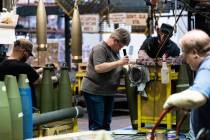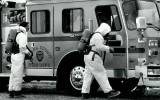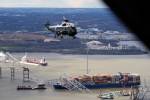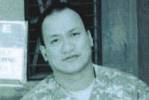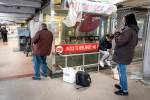‘Lapse’ caused rolling tanker
A runaway train tanker loaded with enough chlorine gas to unleash Clark County's worst-case disaster scenario was set in motion by human error: one mistake compounded by another.
Union Pacific railroad officials detailed the events of Aug. 29 for a round table of federal, state and local officials called together Monday by Rep. Jon Porter, R-Nev.
The first mistake was a switching error at the Arden train yard, said Tom Jacobi, regional vice president for Union Pacific. A switch, which controls train access to tracks, was improperly set. While the tanker was rolling, it gained access to the main track.
The second mistake was a series of decisions that let the tanker escape the Arden train yard. An investigation is still being conducted, Jacobi said. The incident will be detailed in a final report to be submitted to the Federal Railroad Administration.
Jack Fetters, director of the Nevada Legislative Board for the United Transportation Union, offered the public and the assembled group of community leaders and lawmakers the apologies of the Union Pacific employees involved.
"I know the crew on that train and that switching job," said Fetters, who is a conductor for Union Pacific. "They're heartily sorry. It was a lapse in judgment. It wasn't anything on purpose that they had done."
In 2006, the University of Nevada, Las Vegas Institute for Security Studies identified a chlorine gas accident as the most deadly disaster the state could face. Chlorine gas is a toxic inhalation hazard that can cause lung damage and death.
According to the institute's vulnerability assessment, the amount of chlorine gas in an average railway tanker has the potential to kill between 74,000 to 91,000 people if the hazardous substance is released in a populous area, such as the Union Pacific overpass on Charleston Boulevard.
The uncontrolled chlorine tanker crossed that overpass on Aug. 29 and traveled about 20 miles on its south-to-north journey through the most populated parts of Clark County, passing within sight of Las Vegas resorts, the Clark County Government Center, schools, businesses and housing developments. The runaway car reached speeds of 49 miles per hour.
"At what point do we acknowledge to citizens that there's a chlorine tanker on the loose?" Porter asked the emergency responders among those gathered for the meeting at the Fire Training Center in Henderson. "At what point do we notify officials in the community?"
Tim McAndrew, emergency management officer for Las Vegas, said things happened so quickly that the incident ended while the fire departments were being notified. Las Vegas police had said the event was reported to police at 8:47 a.m. and was over by 9:11 a.m.
"By the time it had been determined where the car was, it had already been stopped," McAndrew said.
Other fire officials said that public notifications and evacuations would not start unless a derailment or a release of toxic material occurred.
Most of the emergency responders who spoke identified communication between the railroad and local agencies as a problem area. Members of the community were calling in reports on the runaway tanker to 911 operators while Union Pacific officials in Omaha, Neb., were speaking to Las Vegas police dispatchers. Las Vegas police did not know the runaway tanker contained a hazardous substance until about eight minutes into the episode.
Al Gillespie, fire chief for North Las Vegas, said there was difficulty getting information on what exactly was happening.
"Hence, we didn't know where to respond to and with what resources," Gillespie said.
Jacobi said that Union Pacific is working with Clark County officials to make improvements and prevent a reoccurrence.
Improvements have been made at Arden yard, where anchor cars with set handbrakes block the north end of every track, blocking potential runaway cars. An additional rail car diversion track has been built to make sure that no cars can move from the switch yard to the main track.
A chance of an accident always exists, Jacobi said, but the new safety measures make a repeat of the runaway tanker incident much less likely.
Porter said Monday's discussion of the transportation of hazardous waste through Nevada communities is just a starting point. The issue is bound to mushroom as the debate surrounding the transport of nuclear waste to Yucca Mountain continues, he said.
Emergency responders were vocal in pointing out safety measures that will help them in their jobs.
Fire officials emphasized the need for all trucks and train cars loaded with hazardous materials to be marked with placards.
Richard Brenner, hazmat coordinator for the Clark County Fire Department, acknowledged that such placards fly in the face of homeland security concerns that marked hazmat carriers are potential terrorist targets. But emergency responders have to know what they are dealing with, Brenner said.
Mary Martini, district engineer for the Nevada Department of Transportation, said the state has a traffic management system that allows visual monitoring throughout Clark County. Some dark spots exist, she said, but the system might have been helpful in locating and following the runaway train tanker.
During Vice President Dick Cheney's last visit to Las Vegas, that system was used to monitor his entire route.
Porter said he plans to take all of the concerns made by local officials back to Washington, D.C., where debates on rail safety are unfolding in Congress. The topic is a complicated one, Porter said. Railroads are designated carriers, which means they cannot refuse to haul hazardous materials. But communities should have a say about how and where hazardous materials are passing through, he said.
Some cities, such as Washington, D.C., have tried bans on the transport of hazardous materials to force railroads to take an alternate route. The bans are facing legal challenges by the railroads.
"I say let them challenge," Porter said. "If in fact we don't have a choice about letting these materials pass through our communities, we should at least have a say in the routes."
Contact reporter Lisa Kim Bach at lbach@reviewjournal.com or (702) 383-0287.











